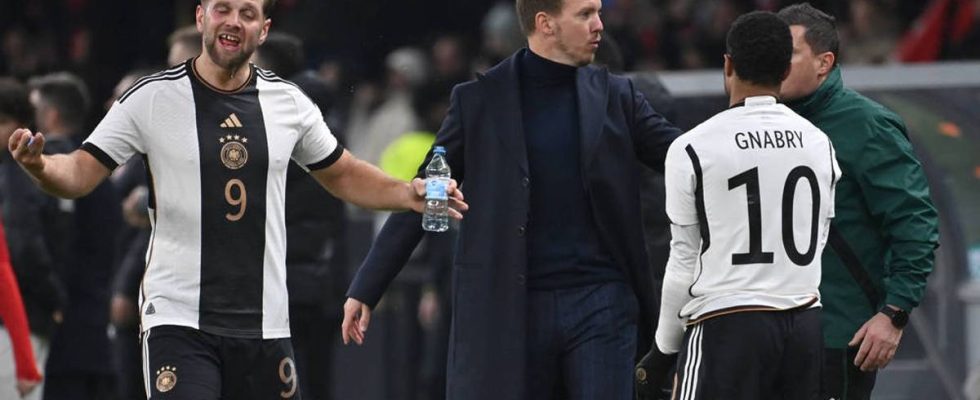“Our game idea shouldn’t be complex, but should be attractive.” If something stuck in Julian Nagelsmann’s inaugural press conference at the DFB on September 22nd, it was the announcement that he didn’t want to overload his players with too many tactical innovations.
On the contrary: Nagelsmann tinkered with his system, relying on an asymmetrical formation with three defenders (Benjamin Henrichs, Jonathan Tah and Antonio Rüdiger), who receive support from two very offensive-minded players (Kai Havertz on the left, Leroy Sané on the right) when the opponent has the ball should.
It wasn’t a spontaneous idea, Nagelsmann had informed his team about his plan several days before the game and held several detailed video sessions – but there was a problem with the implementation, especially in the game against the ball.
The first two Turkish goals came from Sané’s side, the guests’ winning goal came from a (albeit controversial) Havertz handball.
Particularly noticeable: There were always coordination problems between Sané and Henrichs. It was simply noticeable to the Bayern star that he has always had a clear right-back behind him in Munich for months (sometimes Noussair Mazraoui, sometimes Konrad Laimer) and can play forward much more freely there.
Nagelsmann still “didn’t want to paint everything black,” as he emphasized after the final whistle, probably also because his two rail players had created the early lead in the 5th minute. Goalscorer Havertz was even “one of the best men” in the German ranks, the coach said.
It is possible that the Arsenal FC professional will get another chance as a “disguised” left-back in the last international match of the year against Austria on Tuesday in Vienna (8:45 p.m.).

